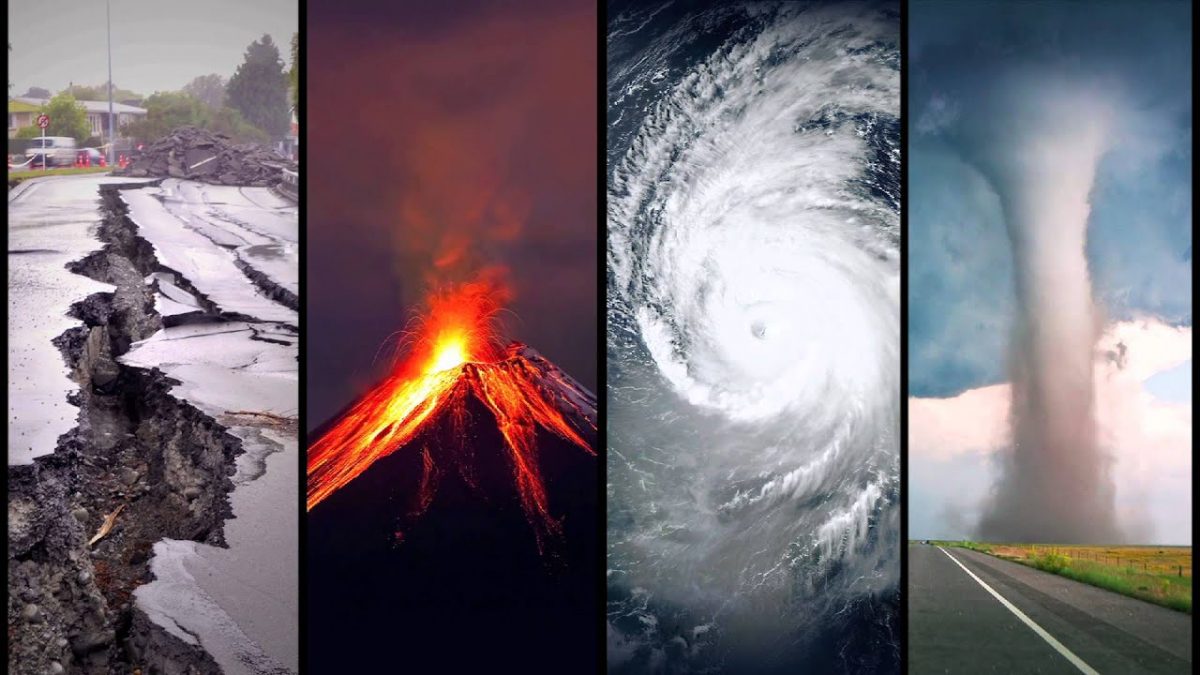
Man-Made Disasters
Definition of Man-Made Disasters
Man-made disasters, also known as anthropogenic disasters, are catastrophic events that are directly caused by human actions. These disasters arise from intentional or unintentional human activities that disrupt the natural order, leading to large-scale destruction, loss of life, and environmental degradation. These events are distinct from natural disasters in that they are triggered by human negligence, industrial activities, military actions, or technological failures. The impact of man-made disasters can be far-reaching, affecting the economy, environment, public health, and social fabric of affected communities.
Causes of Man-Made Disasters
Man-made disasters are primarily caused by various human activities, both deliberate and accidental. These causes can be grouped into several categories:
a) Industrial Accidents
Industrial accidents are often linked to technological failures, poor maintenance, and inadequate safety protocols in manufacturing, chemical, and energy sectors.
- Chemical Spills and Leaks: Accidental release of hazardous chemicals into the environment can lead to toxic contamination of air, water, and soil. Example: Bhopal Gas Tragedy (1984) – A chemical leak of methyl isocyanate from a pesticide plant in Bhopal, India, led to over 3,000 immediate deaths, and thousands more suffered from long-term health effects.
- Oil Spills: Accidental release of petroleum into oceans, rivers, or land can devastate marine ecosystems, disrupt fishing industries, and cause long-term environmental harm. Example: Deepwater Horizon Oil Spill (2010) – A BP offshore oil rig in the Gulf of Mexico exploded, releasing millions of barrels of oil into the sea and causing extensive damage to marine life, coastal economies, and the environment.
- Nuclear Accidents: Nuclear accidents release radioactive materials into the environment, which can cause severe health issues, including cancer, and contaminate large areas. Example: Chernobyl Disaster (1986) – A nuclear reactor explosion in Ukraine released large amounts of radiation, leading to the evacuation of thousands, environmental contamination, and long-term health effects for workers and nearby populations.
b) Technological Failures
Technological failures refer to breakdowns in advanced systems or infrastructure that were designed to be safe, yet fail due to defects, human error, or natural influences.
- Infrastructure Failures: The collapse or failure of vital infrastructure such as dams, bridges, power grids, or water supply systems can have catastrophic consequences. Example: Silver Bridge Collapse (1967) – A suspension bridge in the U.S. collapsed due to a design flaw and fatigue in the structural components, killing 46 people.
- Transportation Accidents: Major accidents in air, sea, or land transportation result in the loss of lives, environmental contamination, and destruction of infrastructure. Example: Titanic Sinking (1912) – The British passenger liner sank after hitting an iceberg, leading to the deaths of over 1,500 passengers and crew.
- Cyberattacks: Digital attacks on infrastructure, critical data, or information systems can cause widespread disruptions to daily activities, leading to economic losses and national security threats. Example: The Stuxnet Worm (2010) – A computer virus that targeted Iranian nuclear facilities, causing physical damage to uranium-enrichment centrifuges.
c) Armed Conflicts and Terrorism
Wars, military conflicts, and acts of terrorism are significant contributors to man-made disasters. They cause loss of life, displacement of populations, destruction of infrastructure, and long-term socio-political instability.
- War and Civil Conflicts: Wars and civil wars between nations or within a country result in large-scale destruction of life, property, and infrastructure. Example: Vietnam War (1955-1975) – It caused millions of deaths, displacement of populations, widespread environmental damage (due to chemical defoliants), and severe psychological trauma.
- Terrorism: Terrorist acts targeting civilians, infrastructure, and institutions often lead to loss of life, fear, and economic disruptions. Example: September 11 Attacks (2001) – Terrorist attacks on the World Trade Center and the Pentagon led to the deaths of nearly 3,000 people, and the global economic and political impact was profound.
- Ethnic and Religious Conflicts: Conflicts based on ethnicity or religion can lead to genocides, violence, and societal breakdown. Example: Rwandan Genocide (1994) – An ethnic conflict between the Hutu majority and Tutsi minority led to the mass killing of over 800,000 people in just 100 days.
d) Environmental Degradation
Human activities that contribute to the degradation of natural resources and ecosystems can have disastrous consequences on biodiversity, air quality, and climate stability.
- Deforestation: Large-scale deforestation for agriculture, urbanization, or logging depletes forest cover, disrupts ecosystems, contributes to carbon emissions, and accelerates climate change. Example: Amazon Rainforest Deforestation – Destruction of vast tracts of the Amazon rainforest, often for farming and cattle ranching, contributes to climate change, soil erosion, and the loss of biodiversity.
- Pollution: Pollution from industrial processes, agriculture, and urban areas significantly harms air, water, and soil quality. Long-term exposure can lead to health problems and ecological imbalances. Example: Air Pollution in Delhi, India – Heavy vehicular emissions, industrial waste, and crop burning create toxic smog in urban areas, leading to respiratory diseases and environmental damage.
- Overfishing: Unsustainable fishing practices deplete fish stocks, disrupt marine ecosystems, and affect global food security. Example: The collapse of cod fishing in Newfoundland due to overfishing, leading to a decline in cod populations and impacting the local fishing economy.
- Climate Change: Human activities, particularly the burning of fossil fuels, contribute to climate change by increasing the concentration of greenhouse gases in the atmosphere, leading to rising global temperatures, extreme weather events, and altered ecosystems. Example: Global Warming – Rising global temperatures lead to melting polar ice caps, rising sea levels, more frequent and intense storms, and disruptions to agriculture.
Types of Man-Made Disasters
a) Chemical Disasters
These occur when hazardous chemicals are accidentally released into the environment, often due to industrial accidents, improper handling, or transport failures. Chemical disasters can cause immediate and long-term harm to humans, animals, and ecosystems. Example: Union Carbide Bhopal Gas Tragedy (1984) – A toxic gas leak from a pesticide plant in Bhopal, India, led to widespread exposure, killing thousands instantly and causing long-term health issues.
b) Nuclear Disasters Nuclear disasters involve the release of radioactive materials into the environment. These disasters occur either due to accidents in nuclear power plants or through military activities like nuclear warfare. Example: Chernobyl Nuclear Disaster (1986) – A nuclear reactor explosion in Ukraine released radiation, resulting in immediate deaths, long-term health problems, and the creation of an exclusion zone that remains uninhabitable for decades.
c) Oil Spills Oil spills occur when petroleum products are accidentally released into bodies of water. These spills can cause massive ecological damage to marine life, coastal ecosystems, and local economies. Example: Exxon Valdez Oil Spill (1989) – A tanker spill in Alaska released over 11 million gallons of crude oil into the sea, affecting wildlife and causing extensive environmental damage.
d) Mining Disasters Mining accidents, particularly in underground mines, can lead to collapses, explosions, and toxic gas releases. Such disasters lead to fatalities and long-term environmental damage. Example: Sago Mine Disaster (2006) – An explosion in a coal mine in West Virginia killed 12 miners and led to calls for better safety regulations in the mining industry.
e) Technological Disasters These include events caused by technological failures, such as dam collapses, infrastructure breakdowns, and large-scale industrial accidents. Example: Tennessee Valley Authority Coal Ash Spill (2008) – A massive spill of coal ash in Tennessee flooded nearby communities, causing significant environmental contamination.
Impacts of Man-Made Disasters The impacts of man-made disasters are far-reaching and multifaceted. They not only result in immediate destruction but also have long-term economic, social, environmental, and health-related consequences.
a) Immediate Human Loss and Suffering Man-made disasters often lead to significant human fatalities. Injuries, displacement, and loss of property follow immediately. Survivors face psychological trauma, physical injuries, and a loss of livelihood.
b) Economic Consequences The economic consequences of man-made disasters can be devastating. The costs of recovery, rebuilding infrastructure, compensating victims, and cleaning up environmental damage can run into billions of dollars. Additionally, economic activities, especially in agriculture and tourism, may be disrupted for years.
c) Environmental Consequences Man-made disasters lead to the degradation of ecosystems and biodiversity. Contamination of water bodies, loss of habitats, air and soil pollution, and climate disruptions are common outcomes.
d) Psychological Impact Survivors of man-made disasters often experience post-traumatic stress disorder (PTSD), depression, anxiety, and other mental health issues due to the traumatic events.
Prevention and Mitigation of Man-Made Disasters Preventing and mitigating man-made disasters requires a combination of policy interventions, technological advancements, and public awareness programs.
a) Stringent Regulations and Safety Protocols Governments must implement and enforce strict safety regulations in industries handling hazardous materials. Safety standards should be regularly updated to keep pace with technological advancements.
b) Risk Assessment and Management Industries should perform regular risk assessments to identify potential hazards and vulnerabilities. Mitigation strategies, such as emergency response plans and environmental safeguards, must be established.
c) Public Awareness and Education Educating the public about the causes and effects of man-made disasters and how to respond can significantly reduce harm during a disaster. Public drills and campaigns about disaster preparedness can save lives.
d) Technological Solutions Adopting modern technologies for monitoring and managing risks, such as satellite imagery, environmental sensors, and early warning systems, can help prevent or reduce the severity of disasters.
e) International Cooperation Man-made disasters often have cross-border effects, especially in cases of pollution, climate change, and conflict. Global cooperation and the establishment of international treaties are necessary to address these issues effectively.

